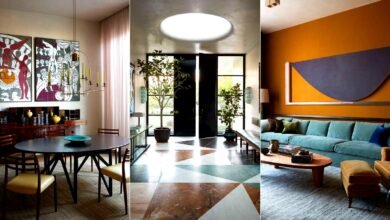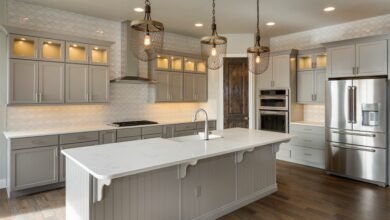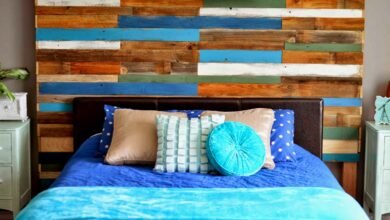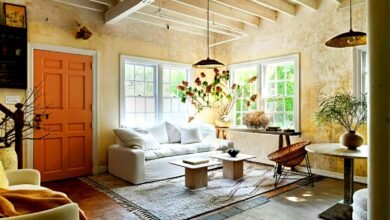The Ultimate Guide to Minimalist Home Decor
This ultimate guide will walk you through 15 essential tips to achieve a minimalist home that is both stylish and serene.

In a world filled with constant noise and clutter, minimalist home decor offers a refreshing escape. Rooted in the philosophy of “less is more,” minimalist design focuses on simplicity, functionality, and intentionality. It’s about creating a space that feels calm, organized, and free from unnecessary distractions. Whether you’re a seasoned minimalist or just starting to explore this aesthetic, this ultimate guide will walk you through 15 essential tips to achieve a minimalist home that is both stylish and serene.
1. Declutter Your Space
The foundation of minimalist home decor is decluttering. Start by evaluating every item in your home and asking yourself whether it serves a purpose or brings you joy. If the answer is no, it’s time to let it go. Donate, sell, or recycle items you no longer need.
Decluttering isn’t just about physical objects—it’s also about creating mental clarity. A clutter-free space allows you to focus on what truly matters and fosters a sense of peace.
2. Stick to a Neutral Color Palette
Minimalist decor is characterized by a neutral color palette. Think whites, grays, beiges, and soft earth tones. These colors create a calming and cohesive atmosphere, making your space feel open and airy.
You can add depth and interest by incorporating subtle variations in texture and tone. For example, pair a white sofa with a beige throw and a gray area rug for a layered yet minimalist look.
3. Choose Functional Furniture
In minimalist design, every piece of furniture should serve a purpose. Opt for functional, high-quality pieces that are both practical and aesthetically pleasing. Avoid oversized furniture that overwhelms the space.
For example, a sleek sofa with built-in storage or a dining table that doubles as a workspace can maximize functionality without sacrificing style.
4. Embrace Negative Space
Negative space, or empty space, is a key element of minimalist decor. It allows your eyes to rest and highlights the beauty of the items you choose to display. Avoid overcrowding your walls, shelves, and surfaces.
Leave walls bare or adorn them with a single piece of artwork to create a focal point. Similarly, keep countertops and tables clear of unnecessary items.
5. Invest in Quality Over Quantity
Minimalism is about valuing quality over quantity. Instead of filling your home with cheap, disposable items, invest in a few high-quality pieces that will stand the test of time. This applies to furniture, decor, and even household essentials.
For example, choose a well-crafted wooden dining table or a durable ceramic vase that adds elegance to your space.
6. Use Multi-Functional Decor
Multi-functional decor is a great way to maximize space and maintain a minimalist aesthetic. Look for items that serve more than one purpose, such as a storage ottoman, a foldable desk, or a mirror with built-in shelving.
These pieces not only save space but also reduce the need for additional furniture, keeping your home clutter-free.
7. Incorporate Natural Elements
Natural elements like wood, stone, and plants add warmth and texture to a minimalist space. They create a connection to nature and soften the starkness of a neutral color palette.
Add a wooden coffee table, a stone accent wall, or a few potted plants to bring life and balance to your decor.
8. Keep Decor Simple and Intentional
When it comes to minimalist decor, less is more. Choose a few meaningful pieces that align with your aesthetic and avoid overcrowding your space. Each item should have a purpose or tell a story.
For example, display a single piece of artwork, a family photo, or a handmade ceramic bowl as a focal point.
9. Opt for Clean Lines and Simple Shapes
Minimalist design is all about clean lines and simple shapes. Avoid ornate or overly detailed furniture and decor. Instead, choose pieces with sleek, geometric designs that create a sense of order and harmony.
A rectangular sofa, a round dining table, or a square bookshelf are excellent examples of minimalist furniture.
10. Use Lighting to Enhance the Space
Lighting plays a crucial role in minimalist decor. Natural light is ideal, as it makes the space feel open and inviting. Use sheer curtains or blinds to let in as much light as possible.
For artificial lighting, opt for simple, functional fixtures like recessed lights, pendant lamps, or floor lamps with clean designs.
11. Organize and Conceal Clutter
Even in a minimalist home, there will be items that you need but don’t necessarily want on display. Use storage solutions like baskets, bins, and cabinets to keep these items organized and out of sight.
For example, store books in a closed cabinet, use a woven basket for blankets, or hide electronics in a media console.
12. Limit Decorative Accessories
Minimalist decor is about restraint. Limit decorative accessories to a few carefully chosen pieces that enhance the space without overwhelming it. Avoid excessive knick-knacks or seasonal decor.
Instead, focus on a few statement pieces, such as a large mirror, a sculptural vase, or a piece of abstract art.
13. Create a Monochromatic Look
A monochromatic color scheme is a hallmark of minimalist design. Choose one color and use varying shades and tones to create a cohesive and harmonious look. This approach simplifies the visual landscape and adds sophistication.
For example, a monochromatic gray palette can include light gray walls, a charcoal sofa, and silver accents.
14. Focus on Open Floor Plans
Open floor plans are ideal for minimalist homes, as they create a sense of flow and spaciousness. If possible, remove unnecessary walls or partitions to open up the space.
Use furniture and rugs to define different areas within the open layout, such as a living area, dining area, and workspace.
15. Practice Mindful Consumption
Finally, minimalist home decor is about more than just aesthetics—it’s a lifestyle. Practice mindful consumption by being intentional about what you bring into your home. Avoid impulse purchases and focus on items that align with your values and needs.
This mindset not only helps you maintain a minimalist space but also promotes sustainability and reduces waste.
Conclusion
Minimalist home decor is a powerful way to create a calm, organized, and intentional living space. By decluttering, sticking to a neutral color palette, choosing functional furniture, and embracing simplicity, you can transform your home into a serene retreat. Remember, minimalism is not about deprivation—it’s about focusing on what truly matters and creating a space that reflects your values and lifestyle. So, take a deep breath, let go of the unnecessary, and embrace the beauty of less. Your minimalist home awaits!











